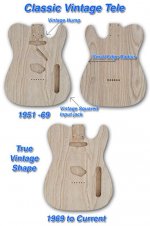nicksorenson
Plastic
- Joined
- Oct 15, 2009
- Location
- Missouri
I build guitars for a living. I am trying to make a drilling jig (with drill bushings) for drilling the string holes in Telecaster style guitar bodies.
I have a cheap spring loaded one hand center-punch for metal. I am having the hardest time getting it to hit "Dead On" with my crosshairs on the piece I'm drilling. Am I using the wrong tool? I can get it within .010" to .020" or so but that's not accurate enough. I want it to be right where I want it.
I think part of the problem is that the point isn't fine enough. Is there a similar tool or the equivalent of what AWL is to wood but that can be used for metal?
Or am I overlooking something. I'd think that a person with some simple tools (the right centerpunch, a drill press, etc) could get this done.
thanks!!
Nick
I have a cheap spring loaded one hand center-punch for metal. I am having the hardest time getting it to hit "Dead On" with my crosshairs on the piece I'm drilling. Am I using the wrong tool? I can get it within .010" to .020" or so but that's not accurate enough. I want it to be right where I want it.
I think part of the problem is that the point isn't fine enough. Is there a similar tool or the equivalent of what AWL is to wood but that can be used for metal?
Or am I overlooking something. I'd think that a person with some simple tools (the right centerpunch, a drill press, etc) could get this done.
thanks!!
Nick


